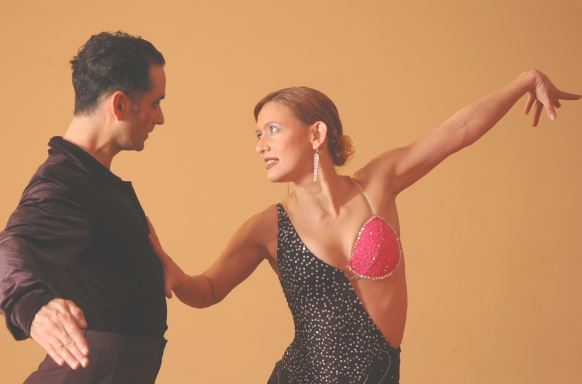
Over the years, various types of ballroom dance have become popular thanks to TV, film, and even theater. Seeing dancers compete on shows like Dancing with the Stars and So You Think You Can Dance totally made the type of dance accessible for many. And while it certainly takes a lot of skill to become a professional, you can also just try ballroom dancing for fun! In fact, ballroom dancing is a great recreational activity for people of all ages and genders.
With so many types of ballroom dances, the choices could get overwhelming. Don’t worry because this list got you covered! Read on to learn about the different types of ballroom dances, their history, characteristics, and more.
What is ballroom dance?
Before listing down the different types of ballroom dance, it is important to first define what ballroom dance is. Most people usually think ballroom dance only refers to competitive ballroom dancing, which is called “dancesport”. Films and TV shows often portray only this side of ballroom dancing, where performers wear flashy costumes and win big trophies.
While dancesport is indeed a big part of ballroom dance, it isn’t the only thing ballroom dance offers. In general, ballroom dance can refer to either competitive or social partner dances, where two performers follow certain step patterns. These step patterns differ depending on the type of ballroom dance.
What is the history of ballroom dance?
Ballroom dance has been around for centuries. Its first record was during the 16th century, when a French author named Jehan Tabourot published Orchésographie. This book contained his study of French renaissance social dances. One example is the “galliard”, which Shakespeare also mentioned in his writing.
During the Renaissance, ballroom dancing was popular among royalty and noble families. They would hold fancy social gatherings in large function halls called “ballrooms”, where guests would eat, schmooze, and perform social dances together.
Ballroom dance continued to rise in popularity in the early 20th century. During this time, jazz music became prominent, with more types of dances invented.
In the 1920s, Broadway and films also featured ballroom dancing. Vernon and Irene Castle are notable examples from this time. This husband-and-wife tandem appeared in several performances, reviving the popularity of ballrooms.
By the 1930s, a dancesport team was formed in London, and soon different competitions for different types of ballroom dance emerged.
What is competitive ballroom dancing?
Another name for competitive ballroom dancing is dancesport. As a competitive sport, ballroom dancing requires performers to perform their routine perfectly. Precision, appearance, and stage presence are some factors judges will score contestants on. Missteps, poor forms, or other mistakes will incur deductions.
There are two international governing bodies that regulate and organize dancesport competitions, namely the World Dance Council (WDC) and the World DanceSport Federation (WDSF). These organizations regulate the rules, dance area sizes, and scoring system for competitions.
Who can try ballroom dancing?
Dancesport requires a high level of athleticism because of its complicated choreography. A competitive dancer will need to train their flexibility, endurance, and overall body strength in order to execute different dance routines.
However, this doesn’t mean only professionals can try ballroom dancing. Nowadays, many schools offer ballroom dancing as a class that students can try for their physical education. Clubs and other local organizations also offer ballroom dancing classes for people of all genders and ages.
It is a great hobby where you can meet all kinds of people. Furthermore, ballroom dancing is also a fun way to exercise! It conditions and tones your body and improves your mental health by relieving stress and uplifting your mood.
Before signing up for classes, of course, it’s a good idea to learn about the different types of ballroom dance. That way, you’ll know exactly what you’re getting into!







